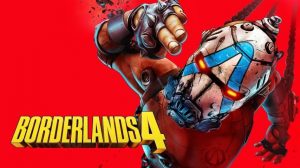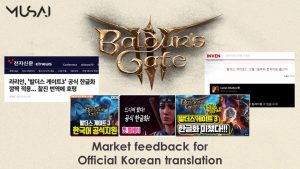[MUSAI] Why LSPs don’t create a glossary for your game anymore?
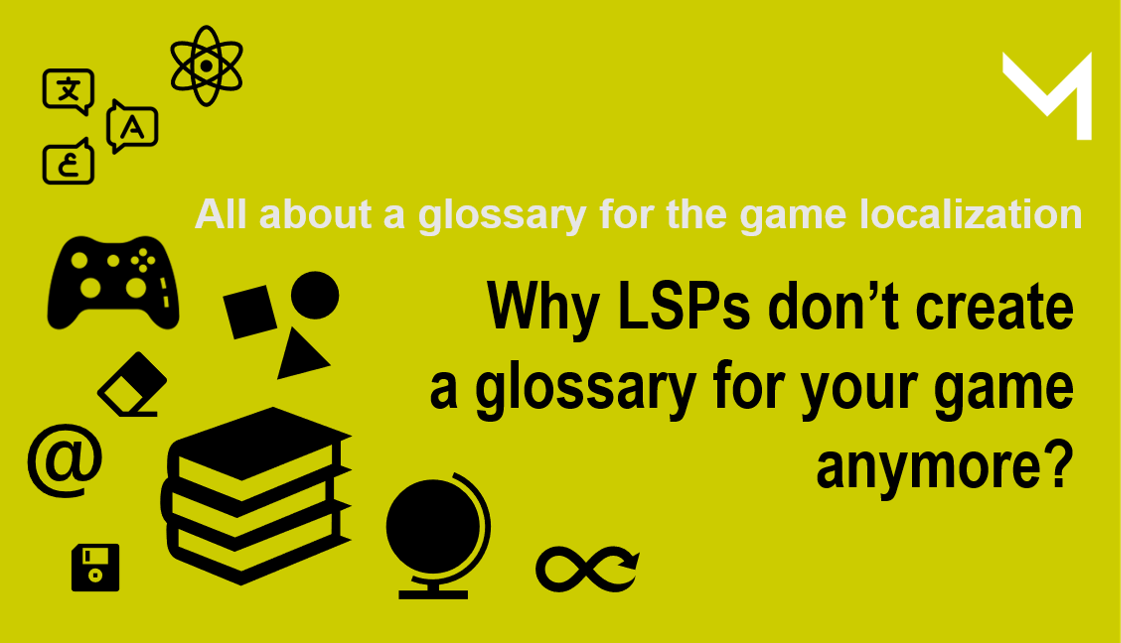
2020-06-30
As you know, localization doesn’t mean a process just to translate a source to a target text. The following table shows the task list required for a console game localization.

You may be surprised that there is such a long list for localization and how many steps it needs from ‘Familiarization’ to ‘Bug fix’. Of course, the to-do list is flexible. Some tasks can be changed and even some of them are omitted due to the various factors like market trends and client’s demands. All the process on the list is important but we will focus on ‘glossary creation’ in this article, which is a process getting disappeared lately in spite of its importance.
What is a glossary?
In the process of localization, a glossary is like a list of the definitions or expressions of certain words in the contents. By defining the glossary, it helps readers understand the meaning of contents correctly and avoid misunderstandings and ambiguities. Furthermore, it gives the consistency to the translation regardless of its location in the text.
For example, you can often see the part ‘definitions of terms’ in the legal documents such as contracts or technical documents. These are written to make the meaning clear for readers.
Why does the game localization need a glossary?
Game is a genre considered as a creative and cultural content. That means, not only the background and concept of each game, but also all the details such as the names of characters, locations, items, level systems, etc. in the game are usually created by a game writer’s imagination. Therefore, if you don’t understand them properly or even the worst case, if wrong terms are used, it will be hard for the players to have an immersive play.
Types of game glossaries
For each game title, the glossary is required to be created separately. If it is a sequel of another project, the previous title’s materials can be based as a reference but still the process of glossary creation is needed for each. In addition to the glossary for titles, there are more kinds of glossaries used when localizing games as follows.
1. Glossary for console platform (from the 1st parties)
The glossary used for each console (e.g. PS, Xbox series) from the platform owners such as SIE, MS, etc., defines the terms of each hardware and service. This kind of glossaries must be followed during the translation process.
2. Digital platform
As for the major digital distribution platforms such as EA Origin, GOG, and Uplay, they have own glossaries for their platforms, and this should be followed as well.
3. ETC
The word list for prohibition to block them in chat. Usually each game developer has own prohibition list and updates it periodically.
These glossaries are provided by the owner or creator of each glossary when you are involved in the related localization project.
How does the process of the glossary creation work?
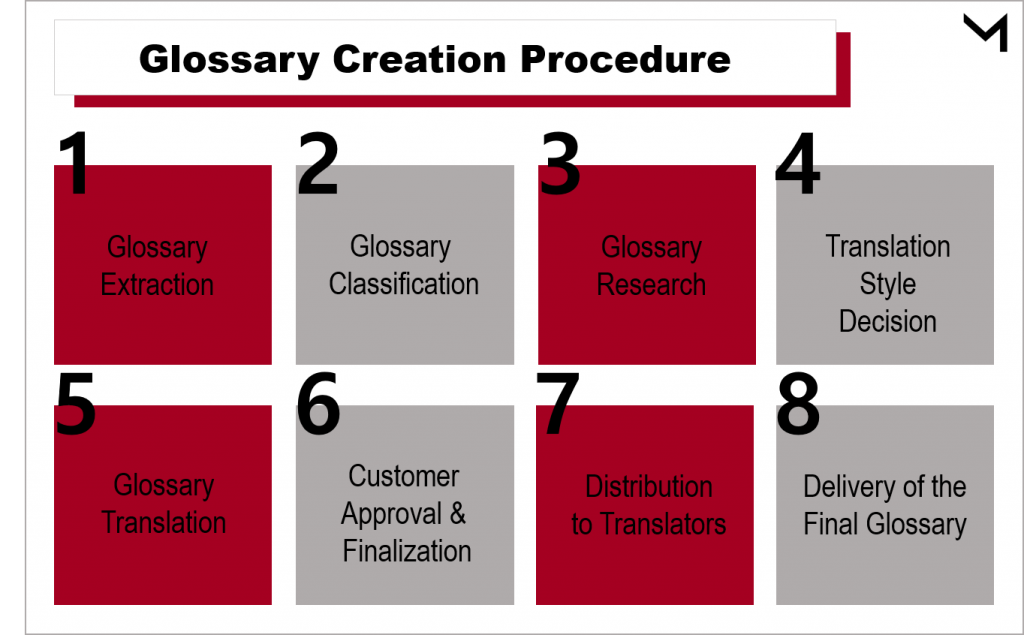
-
Glossary extraction (from the entire in-game contents)
-
Glossary classification (e.g. character name, item, weapon, location, level, UI, etc.)
-
Glossary research (if the contents require specific background or knowledge such as military, history, biology for translation)
-
Translation style decision (transliteration, translation, creation, etc.)
-
Glossary translation
-
Customer approval and finalization
-
Distribution to translators and reviewers, and glossary update amid the process of translation
-
Delivery of the final glossary to the customer after the translation is completed.
The items in a glossary
-
Source Term
-
Translation (Target Term)
-
Category
-
Definition
-
Product Name
-
Version
-
Approval Status
-
Custom or Alt: Alternative or similar terms
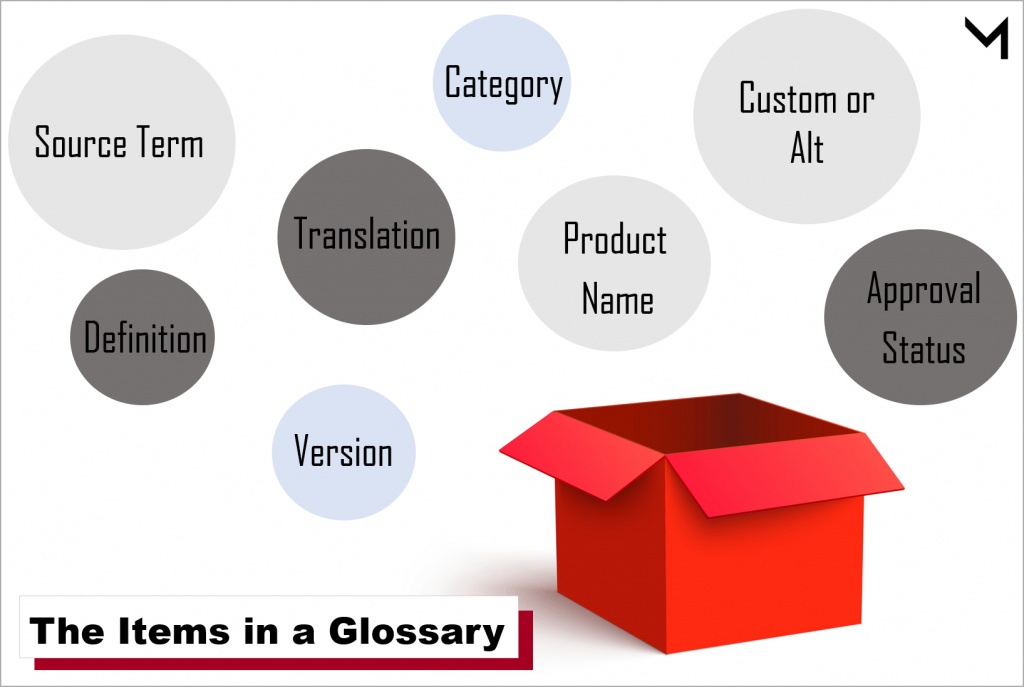
Why is the glossary important?
I would like to say that glossary creation is a ‘foundation’ of the game translation. If the glossary is well defined and created at the beginning of the localization process, the whole workflow is going to be much easier and smoother.
All linguists including translators and internal reviewers can have a consistent understanding of the terms, apply same expressions through the entire contents and the quality of translation will be more improved in terms of consistency and accuracy. A strong foundation brings the powerful result, especially for the large titles which have the bigger volume of contents to be translated.
In addition, the translation style of glossary can affect to the style guide for the overall translation, so it can navigate the direction of the translation style.
Why LSPs don’t create a glossary anymore?
-
Changes in the gaming market
The main gaming platform has been changed from PC/Console to mobile platform last few years. It brought the environment that the fast turnaround for a project is considered as a top priority rather than the quality of result in the localization field.
As a perspective of LSP, mandatory tasks which requested from the clients like meeting a deadline should be done in priority, so glossary creation is naturally pushed back on the to-do list or omitted at the worst.
Besides, the volume to be translated in mobile games is much smaller than PC or Console games, so the necessary of glossary faded as well.
-
Changes in the game localization process
For AAA PC/Console titles, the process of localization tends to get started before most of contents are not frozen to meet the tight timeline for the global launching. So, glossary extraction becomes more difficult because the work can be available when the in-game contents are completed more than 70~80%.
Main issues for the glossary management
Even though the importance of glossary creation seems obvious indeed, it is not easy realistically in terms of management.
As we mentioned above, each title requires to create a separated glossary since every single title has different background and concept. In the case of AAA titles with enough budget, it’s possible to allocate the glossary management to a terminologist or linguist as their main task, but it’s really hard to do that in other cases.
Besides, most of the game contents are updated constantly and frequently not like a book or movie which have completed contents before translation. Thus, even if the glossary is fixed at the beginning of the project, it should be changed and added simultaneously during the whole translation stage to maintain the glossary.
Then, should we pay for it?
Glossary creation requires resources and time like the other process. Well, ‘resources and time’ are counted as a ‘cost’ from a vendor point of view and it’s a big pressure for the BDM or salesperson who have to fight and win in the tough bidding war. That’s why the part of glossary creation is getting disappear in the quotation, and it is considered as a non-essential task during translation. In the other way around, it’s getting difficult to charge for a glossary creation to clients since the localization process without a glossary has been common.
As a localization studio with over 20 years of experience, Musai Studio still believes that glossary creation gives a huge advantage to make the better quality of the game localization. That’s why our team keeps the process if needed no matter it is billable or not. We hope this article reminds the importance of glossary to whom work with the passion in the gaming industry.




